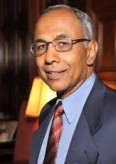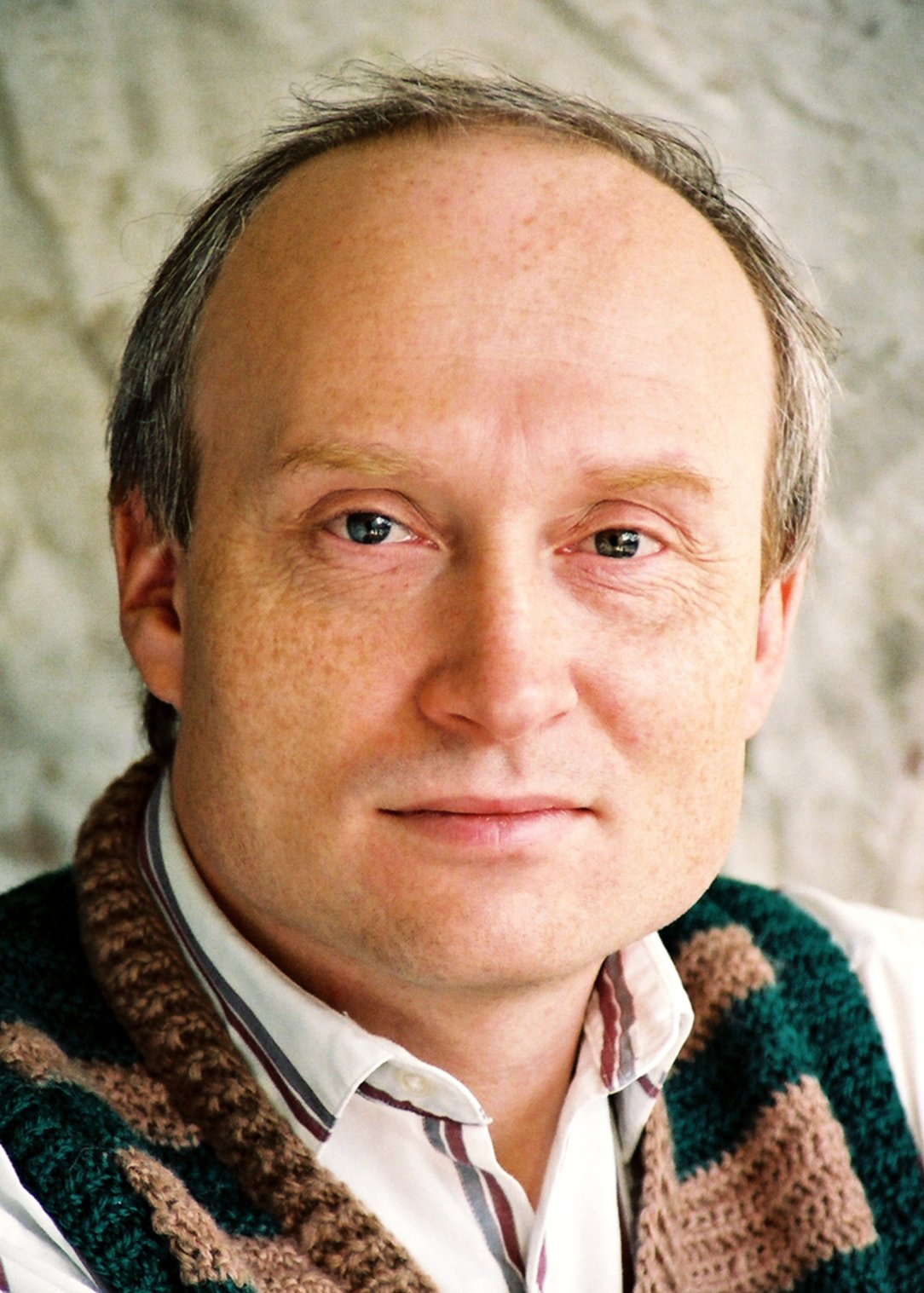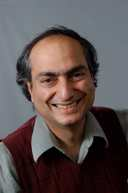
1st International Workshop on Reliable CyberPhysical Systems
WRCPS 2012
In Conjunction With
Irvine, USA, October, 8th, 2012
Open Systems Laboratory, Department of Computer Science
University of Illinois at Urbana-Champaign
Title: "Robust Sensor Networks for Structural Health Monitoring and Control".
Abstract: Sensor-actuator networks provide the ability to continuously monitor and effect the environment. Sensor-actuator networks require a new paradigm of computing which can take advantage of massive parallelism to overcome limitations of unreliable hardware, inaccurate sensors, unreliable communication, low bandwidth, and strong energy constraints. The key idea in our approach is to push more processing onto the embedded nodes--providing robustness through decentralized computing and guarantees through combination of statistical and structural reasoning. Illinois Structural Health Monitoring Project (ISHMP) has developed a service oriented open source software to address these issues. Since 2008, ISHMP software has been deployed on the Jindo Bridge, a 484 meter long cable-stayed bridge connecting Jindo Island to the Korean peninsula. The bridge has been densely instrumented with 113 solar-powered Imote2 wireless sensor nodes in a long-term deployment, providing over 700 sensors measuring acceleration, temperature, light and wind data. The system is capable of around-the-clock unattended monitoring, event detection, data collection, and in-network data analysis. Changes in vibration profile can be used by damage detection algorithms to identify and locate damaged or weakened elements.
Bio: Gul Agha is a Professor in the Department of Computer Science at the University of Illinois at Urbana-Champaign, and Director of the Open Systems Laboratory. He is known for his work on the Actor model of concurrent computation, and was also Editor-in-Chief of ACM Computing Surveys from 1999 to 2007. Agha received his Ph.D. in Computer and Communication Science from the University of Michigan in 1986, under the supervision of John Holland. However, much of his doctoral research was carried out in Carl Hewitt's Message-Passing Semantics Group at Massachusetts Institute of Technology (MIT). Agha's dissertation was published by the MIT Press as Actors: a model of concurrent computation in distributed systems, a book which, according to the ACM Guide to Computing Literature, has been cited over 300 times.

Computer Science
California Institute of Technology
Title: "Cyber-physical systems that respond to earthquakes and other geospatial events".
Abstract: Geospatial events such as earthquakes, floods, and dissemination of pollution are detected by integrating data from different points in space over time. Responses to such events also require control signals to be orchestrated across multiple points in space. Communication and computing systems fail as geospatial events, such as fires, progress over time; therefore ensuring the reliability of the application is difficult. This talk discusses experience with sensing and responding to earthquakes and hazardous radiation. Joint work with Julian Bunn, Annie Liu, and Michael Olson.
Bio: K. Mani Chandy is the Simon Ramo Professor at the California Institute of Technology. Dr. Chandy got his Ph.D. from the Massachusetts Institute of Technology in Electrical Engineering at the Operations Research Center in 1969. He has served as a consultant to a number of companies including IBM and Bell Labs. He has been at the California Institute of Technology since 1987, two years as a Sherman Fairchild Fellow, and then as a professor in Computer Science. Dr. Chandy is a member of the National Academy of Engineering. He was a co-founder of a company, iSpheres, in the area of event-driven architecture; that software is now marketed by Avaya. Dr. Chandy does research on sense and respond systems. He has published three books and over a hundred papers on distributed computing, verification of concurrent programs, parallel programming languages and performance models of computing and communication systems.

Department of Computer Science and Engineering
University of California, San Diego
Title: "Variability-Resistant Software Through Improved Sensings".
Abstract: Variability in delivered performance by sensing and computing devices is a growing reliability challenge.Manufacturing variability has traditionally been handled through overdesign by hardware system designers. Unfortunately, the overdesign margins have become prohibitively expensive and infeasible with the growing scale of designs. In an alternate universe, sensing of the physical environment could provide important data to adjust software/computation at different levels. In this talk, I will discuss our experiments to characterize variability, program structuring and task scheduling that make a software stack robust against variations in the computing environment.
Bio: Rajesh Gupta is a professor and holder of the QUALCOMM endowed chair in Embedded Microsystems in the Department of Computer Science & Engineering at UC San Diego, California. He leads the Microelectronic Embedded Systems Lab and is head of the Embedded Systems Group at UCSD. Rajesh did his undergraduate education at IIT-Kanpur and his graduate education at UC Berkeley and Stanford. He currently serves as an advisor to Tallwood Venture Capital, RealIntent, Calypto and Packet Digital Corporation

Department of Computer and Information Science
University of Pennsylvania
Title: "Reliability Challenges in Medical CPS".
Abstract: Modern techniques for treating patients are very dependent on medical devices. Medical devices include sensors, which provide vital information about patient state; actuators that effect treatment; and decision support systems that help clinical personnel in planning the treatment. Increasingly, devices used in treating a patient are interconnected, forming a patient-centric cyber-physical system (CPS). Medical CPS hold out the promise of improved patient care with fewer opportunities for human error and decreased treatment costs. In particular, medical CPS enable the development of physiologically closed-loop approaches that automatically deploy safety measures in response to changes in the patient's condition. At the same time, deployment of such medical CPS presents a variety of challenges. This talk will discuss design challenges, which include addressing new patient safety hazards due to network connectivity and incompatibility between individual devices. Furthermore, new regulatory challenges arise from the need to assess safety of systems that will be assembled on demand at each patient's bedside.
Bio: Prof. Sokolsky is a Research Associate Professor with the Department of Computer and Information Science of University of Pennsylvania. His main research interest is the application of formal methods to design and verification of distributed real-time systems. Other interests include on-line monitoring of distributed systems and formal foundations for it, hybrid systems, automated extraction of specifications from source code, and formal methods in software engineering in general and in embedded software in particular.

Electrical Engineering Department
University of California, Los Angeles
Title: "In Sensors We Trust: Balancing Risk and Value in Pervasive Sensing".
Abstract: Sensors of diverse capabilities and modalities, carried by us or deeply embedded in the physical world, have invaded our personal, social, work, and urban spaces. Our relationship with these sensors is a complicated one. On the one hand, these sensors collect rich data that are shared and disseminated, often initiated by us, with a broad array of service providers, interest groups, friends, and family. Embedded in this data is information that can be used to algorithmically construct a virtual biography of our activities, revealing intimate behaviors and lifestyle patterns. On the other hand, we increasingly depend directly and indirectly on information originating from these sensors for making a variety of decisions, both routine and critical, in our lives. The quality of these decisions and our confidence in them depend directly on the quality of the sensory information and our trust in the sources. Drawing upon examples of this two-faceted relationship with sensors from our work in applications such as mobile health and sustainable buildings, this talk will discuss the challenges inherent in designing a sensor information flow and processing architecture that is sensitive to the concerns of both producers and consumers. For the pervasive sensing infrastructure to be trusted by both, it must support a privacy-utility trade-off that balances the tension between risk of information (RoI) sharing to the producer and the value of information (VoI) sharing to the consumer. The talk will describe an approach to enabling this trade-off based on interpreting privacy and utility in terms of inferences that are allowed or prohibited, and supported by mechanisms for controlled transformation of the quality of information (QoI) via selective obfuscation driven by statistical models of individual behaviors, and robust fusion of information of uncertain quality and obfuscation from sensors of varied trustworthiness.
Bio: Mani Srivastava is on the faculty at UCLA where he is a Professor in the Electrical Engineering Department, and is also affiliated with the Computer Science Department. Prior to joining UCLA in 1992, he received is PhD from UC Berkeley in 1992, and worked at Bell Labs Research for a few years. He currently serves at the Editor-in-Chief of the IEEE Transactions on Mobile Computing, and is a Fellow of the IEEE. His research interests are in embedded wireless systems, power-aware systems, wireless networks, and pervasive sensing, more details on which can be found on the web site of UCLA's Networked and Embedded Systems Laboratory (http://nesl.ee.ucla.edu).
